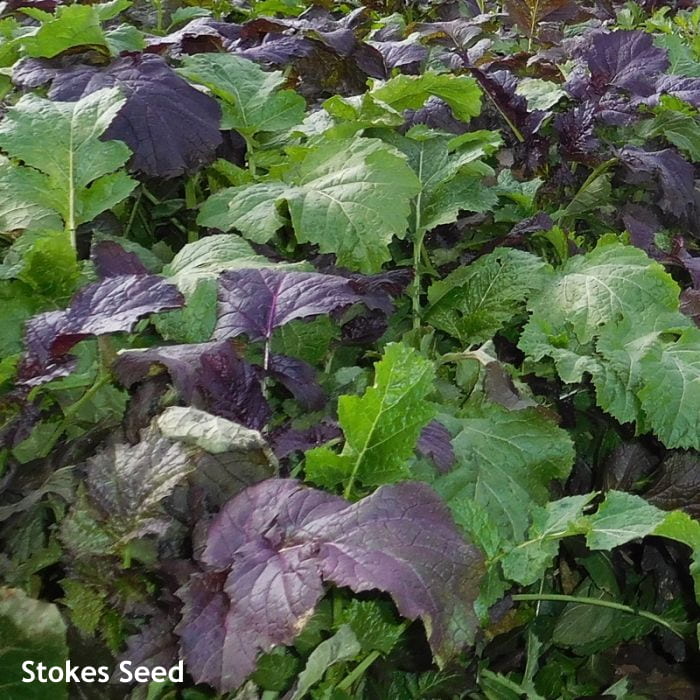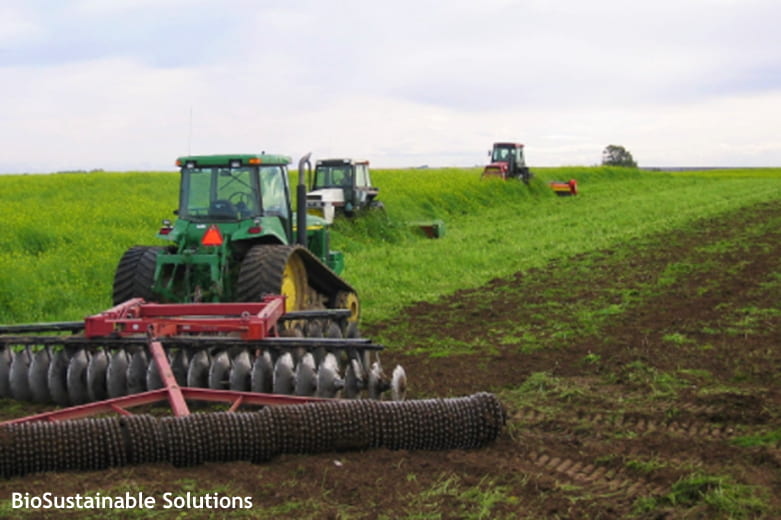Gordon Johnson, Extension Vegetable & Fruit Specialist; gcjohn@udel.edu
Crop rotation is a key to successful vegetable production. However, land limitations often make long term rotations difficult. Shorter rotations lead to a buildup of pests, with soil borne diseases and nematodes being a major challenge for many vegetable crops. One approach to tighter rotations is to fumigate soils using commercially available chemical fumigants. Fumigants such as chloropicrin; dicloropropene + chloropicrin; metam-sodium, and metam-potassium are being used in this region where labeled. A major drawback to chemical fumigation is material cost. There are also application requirements and equipment considerations to take into account.
There has been considerable interest in the use of certain crops as biological fumigants ahead of vegetable production to reduce the need for chemical fumigation, especially in tight rotations. These are crops that would be grown for their naturally occurring compounds that kill soil borne pests. Plants in the mustard family, such as mustards and rapeseed, and Sorghum species (sudangrass, sorghum-sudangrass hybrids) have shown the potential to serve as biological fumigants. Research in this region and across the country has shown promise in using these crops to reduce soil borne pests. Plants from the mustard family produce chemicals called glucosinolates in plant tissue (foliage particularly). These glucosinolates are released from plant tissue when it is cut or chopped and then are further broken down by enzymes to form chemicals that behave like fumigants. The most common of these breakdown products are isothiocyanates. These are the same chemicals that are released from metam-sodium (Vapam) and metam-potassium (K-Pam), commonly used as chemical fumigants. Sorghums produce a cyanogenic glucoside compound called Dhurrin that breaks down to release toxic cyanide when plant tissue is damaged.
Research on the control of Phytophthora capsici for cucurbit crops (pumpkins, melons, watermelons, squash) using biofmigation with mustards has been especially promising.
It is important to note that success with biofumigant crops depends on a number of factors. The following are some suggestions to achieve the best results:
- Plant biofumigant crop varieties selected or bred for higher levels of active compounds if available. An example is the Caliente mustard products including Caliente 61, 119, and 199. Most recently, Caliente Rojo has been released. It has been bred to produce up to 10% more Isothiocyanates and more biomass in a shorter growth period than Caliente 199.

Caliente Rojo biofumigant mustard.
- Produce as much biomass of the biofumigant crop as possible. This requires that you have a good stand, fertility, and sufficient growing time. The more biomass that is produced and that is incorporated, the more chemical is released. However, as plants mature, they will reach a point where levels of these active chemicals decline, and you should not let the plants go to seed. There is also the practical consideration that it is difficult to do a good job of incorporation with too much biomass. With a crop like sudangrass, this means you cannot let it get too tall. For biofumigant mustards, apply fertilizer at minimum 50 lb/A nitrogen with sulfur (ammonium sulfate is recommended). Sorghum species will require 80-120 lbs of N. Use seeding rates recommended for the specific crop you are growing.
- The plant material must be thoroughly damaged so that enzymes can convert glucosinolates into isothiocynates or so that the Dhurrin is converted into cyanide. This means that you need to chop the material as much as possible and work it into the soil as quickly as possible so as to not lose the active compounds to the air. A delay of several hours can cause significant reductions in biofumigant activity. The finer the chop, the more biofumigant is released.
- The material should be incorporated as thoroughly as practical to release the biofumigant chemical throughout the root zone of the area that is to be later planted to vegetables. Poor distribution of the biofumigant crop pieces in the soil will lead to reduced effectiveness. Tractor mounted rototillers or a disk harrow with cultipacker are commonly used.

Flail mowing followed by immediate incorporation is critical to biofumigation success.
- Sealing with water or plastic after incorporation will improve the efficacy (as with all fumigants). Soil conditions should not be overly dry or excessively wet. Irrigate if rain is not imminent to promote biofumigation (water is needed because hydrolysis is the reaction step that transforms glucosinolate into isothiocyanate).
- Disk lightly before planting at least 7 days later to release any residual fumigant gas as well as manage any weeds that germinated.
Biofumigant crop systems include overwintering rapeseed; early spring planted mustards, and late spring planted sorghum/sudangrass. Each has the potential to fit different vegetable cropping sequences for early, mid, or late season production.
Different species and cultivars of biofumigant crops contain varying levels of active compounds. There have been significant efforts to evaluate species, and varieties within a species, for levels of biofumigant chemicals produced, as well as some breeding and selection efforts to increase levels of these compounds. This work is on-going in different parts of the US and the UK. Where varieties with higher levels of active chemicals are available, they should be used.
A major limitation to biofumigant crop use is the fact that you cannot deliver high enough levels of the active chemicals to do a complete fumigation job and the biofumigation effectiveness is also limited by the depth of incorporation. However, you are adding organic matter and do get the benefits associated with that addition.
The bottom line: biofumigant crops can suppress soil borne pests but are not a full replacement for chemical fumigants, nor are they a substitute for adequate rotations. However, using biofumigant crops in combination with disease tolerant vegetable varieties can allow for a greater chance of success in fields with soilborne disease or nematode problems.
